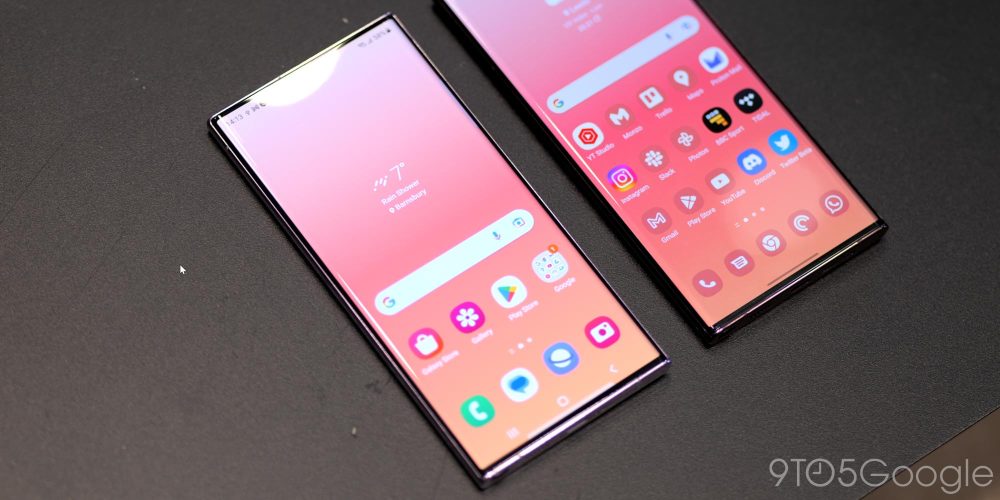
Curved screens have been a part of many Samsung devices for years now, to the dismay of some customers. With an S Pen in the mix, curved screens make even less sense, and Samsung is finally admitting that by mostly flattening out the sides of the Galaxy S23 Ultra.
Samsung, at one point, was shipping nearly every flagship phone with curved screens across both sides of the display. This often led to unpleasant reflections along the side of the screen, higher repair costs in some cases, and more complicated and more expensive screen protectors, and all just for a “premium” look.
With its Galaxy S20 series, Samsung largely did away with curved screens, with only slight curves along the sides of the display that were more in line with the likes of iPhones and other mainstream smartphones. The Galaxy S21 series kept that up, but Samsung took a step backwards with the Galaxy S22 Ultra which brought back curved screens, while the Galaxy S22 and S22+ were completely flat.
We mentioned the frustration with curved screens in our Galaxy S22 Ultra review last year:
Curved glass edges result in the S Pen being physically harder to use along the sides of the display, as it easily slips down the side if you get too close to the edge. I’ve long questioned the sanity of using curved edges on a device designed for handwriting with a pen, but at this point it’s just ridiculous. Samsung has been moving away from these steep curves for a few years on its Galaxy S lineup and even has perfectly flat glass on the S22 and S22+. It’s ridiculous to include curved glass on the only device in the lineup that has a stylus, and it’s long past time for this trend to go away for good.
With the Galaxy S23 Ultra, Samsung is rectifying that somewhat by lessening the curved screen.
Samsung confirmed to 9to5Google that the curved glass on the sides of the Galaxy S23 Ultra’s display has been reduced by 30%. This increases the completely flat surface area by around 3%, and is very much noticeable in person.
The Galaxy S23 Ultra’s expansive 6.8-inch edge display is sharper than the Galaxy S22 Ultra, as the display has a reduced curvature by 30% to create a larger and flatter surface area by ~3% for the best visual experience on a Samsung Galaxy smartphone.
Our Damien Wilde noticed in his hands-on time with the Galaxy S23 Ultra that the “workable area is basically completely flat.” The only real side effect is that the bezels appear slightly larger, just because the curve doesn’t hide it quite as much as pictured below.

Pre-orders for the Galaxy S23 Ultra are open now from $1,199, with phones set to ship out to customers on February 17. You can get up to $150 in extra credit with your pre-order when using our link.
More on Samsung Galaxy S23:
- Galaxy S23, S23+, and S23 Ultra arrive starting at $799 with 200MP camera, 256GB storage in tow
- Galaxy S23 vs. Pixel 7: Battle of the base model [Video]
- Galaxy S23 packaging is fully recyclable as Samsung pushes for more sustainable products
Add 9to5Google to your Google News feed.
google-news
Author: Ben Schoon
Source: 9TO5Google



